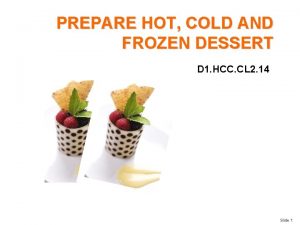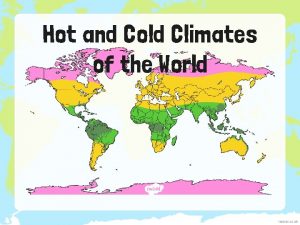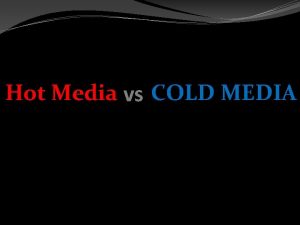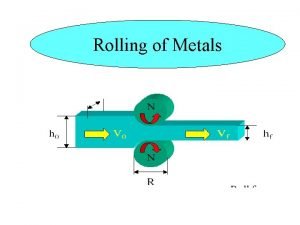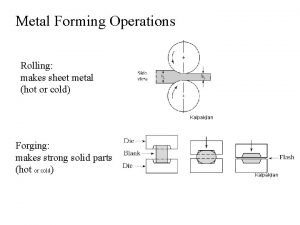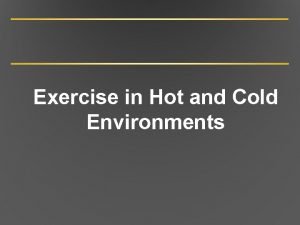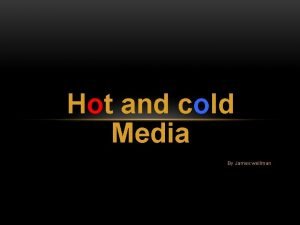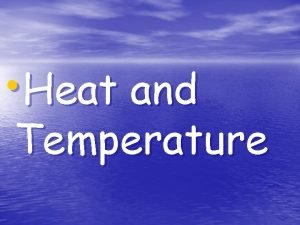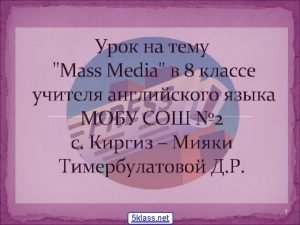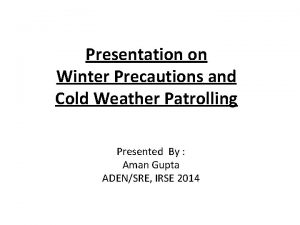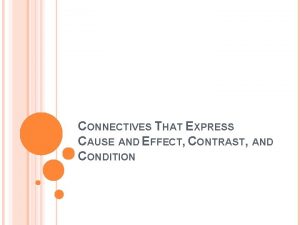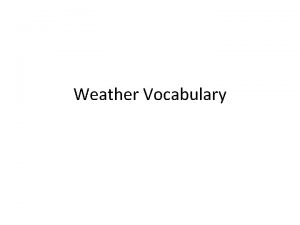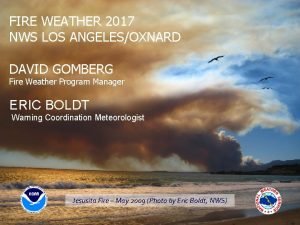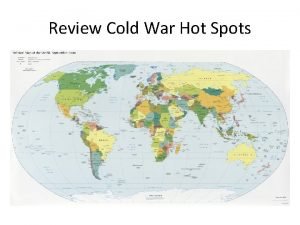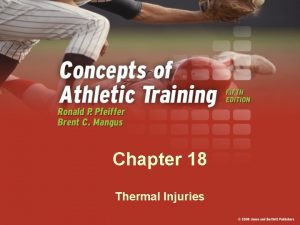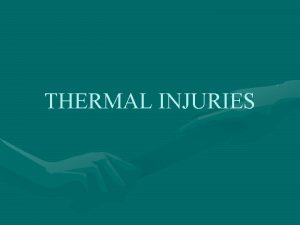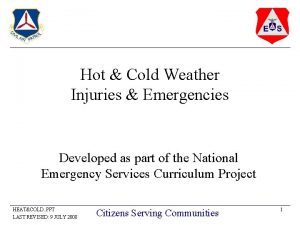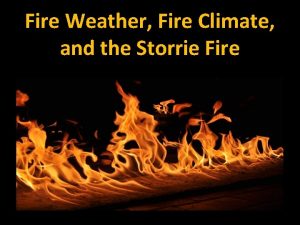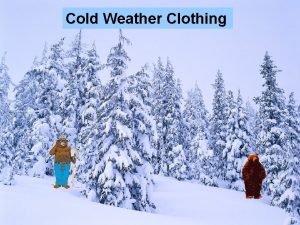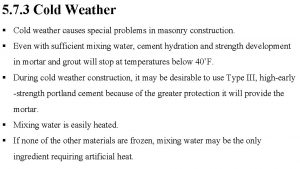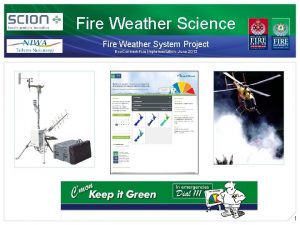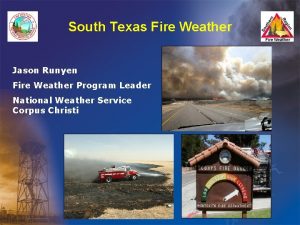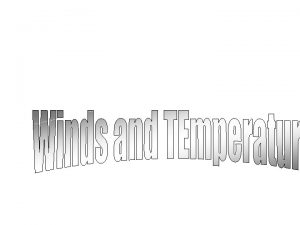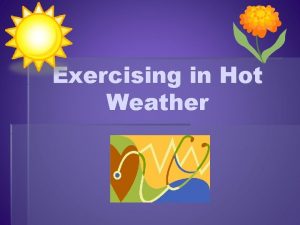Thermal injuries Hot and Cold Weather Fire Hot
































- Slides: 32

Thermal injuries Hot and Cold (Weather, Fire, Hot liquid and Electricity) Dr/Samah Fathy Ibrahim Assistant professor of forensic medicine and clinical toxicology

Objectives of this lecture 1. 2. 3. 4. Classification of thermal injuries Severity of thermal injuries Extent of thermal injuries Factors affecting severity of thermal injuries 5. Causes of death from thermal injuries 6. Difference between A. M & P. M burns

Skin anatomy The skin is the largest organ of the body. It has multiple functions epidermis hypodermis

Thermal injuries due to heat • Exposure to heat will lead to – Heat diseases (hot air) • Heat cramps • Heat exhaustion(syncope) • Heat stroke (hyperpyrexia) – Burn (hot solid/ liquid) • Dry thermal injuries • Moist thermal injuries

Heat diseases Heat cramps- Heat exhaustion- Heat stroke • • • Heat affects-----Mechanism Clinical picture Treatment PMP of heat hyperpyrexia (stroke)

Different types of thermal injuries Dry Burn- Wet Burn • • • Cause Clothes Hair Burn Other systems Soot in air passage COHb in blood • • • Spread Degree Charring Vesicles Healing

Severity (Degrees) of thermal injuries • Dupuytren classification • Wilson’s classification

Dupuytren’s classification Wilson’s classification


Immersion into hot liquid Run hot fluid

Splashed hot droplets

2 nd degree burn

Dry Burn shows all degrees

Dry Burn shows complete charring (carbonization)

9% 18% 9% 9% 18% 1% 9% 9% Extent of the burn Rule of nine

Extent of the burn Rule of nine Factors affecting severity of thermal injuries 18% 14% 18%

Causes of death from thermal injuries • Immediate causes (6 hours) – Shock, Injury and Asphyxia • Rapid causes (6 -48 hours) – Shock, Embolism and Asphyxia • Delayed causes(>2 days) – Injury and infection


Difference between A. M & P. M burns Item 1 - Hyperemia 2 - Vesicles 3 - Soot in air passages 4 - Co. Hb in blood. 5 - Signs of healing or sepsis. 6 - Other cause of death detected. A. M. burn P. M. burn

Difference between A. M & P. M burns Item A. M. burn P. M. burn 1 - Hyperemia 2 - Vesicles Present; tense filled with serum (rich in albumin and chloride). Absent; if present it is soft filled with air; if fluid: poor in albumin and chloride. 3 - Soot in air passages Present Absent. 4 - Co. Hb in blood. Present 5 - Signs of healing or Present. sepsis. 6 - Other cause of death Absent. detected. Absent. Present e. g. , strangulation, head injuries, . . . etc.


Antemortem burn Soot in trachea

Postmortem burn

Heat artifacts Pugilistic attitude resemble ------

Heat artifacts Splitting of skin resembles-----

Heat artifacts Thermal skull fracture with extradural hemorrhage resembles----

Heat artifacts Pugilistic attitude resemble ------Splitting of skin resembles-----Thermal skull fracture with extradural hemorrhage resembles----

Death due to cold • More common in children and old people

Electrical burn • Factors affecting severity of electrical burn • Cause of death • Clinical picture

PMP of electrocution No signs Collapsed blister with black Collapsed blister with white skin

PMP of electrocution Marked pallor and adjacent hyperaemia

 Hot as fire cold as ice sweet as sugar lyrics
Hot as fire cold as ice sweet as sugar lyrics Thermal energy section 3 using thermal energy
Thermal energy section 3 using thermal energy Thermal transfer vs direct thermal printing
Thermal transfer vs direct thermal printing The cold war lesson 1 the cold war begins
The cold war lesson 1 the cold war begins Barley spreadbetting
Barley spreadbetting Prepares frozen and cold desserts
Prepares frozen and cold desserts Media hot and cold
Media hot and cold Hot and cold world map
Hot and cold world map Hot working and cold working difference
Hot working and cold working difference Hot working of metals is carried out
Hot working of metals is carried out Hot media and cold media
Hot media and cold media Differentiate between hot working and cold working
Differentiate between hot working and cold working Proses pengerjaan panas
Proses pengerjaan panas Hot and cold application
Hot and cold application Hot and cold media
Hot and cold media Objectives in making sandwich
Objectives in making sandwich Flat rolling
Flat rolling Hot rolling
Hot rolling Exercise in hot and cold environments
Exercise in hot and cold environments Hot
Hot What has more thermal energy an iceberg or hot water
What has more thermal energy an iceberg or hot water Whenever the weather
Whenever the weather Cold weather patrolling temperature
Cold weather patrolling temperature Contrast connectives
Contrast connectives Weather tongue twister
Weather tongue twister Cold front weather
Cold front weather Reichstag fire who was the fire starter
Reichstag fire who was the fire starter Fire damper access
Fire damper access Fire hose reel signage standards
Fire hose reel signage standards Rwi are
Rwi are Race fire safety
Race fire safety Fire weather snooper
Fire weather snooper Cold war hot spots
Cold war hot spots





